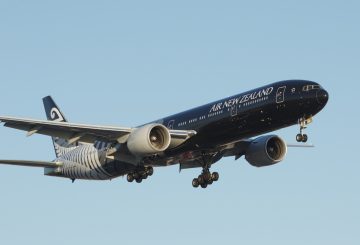Người New Zealand được thiết lập để có thể trở về từ Úc trong tháng này, và từ phần còn lại của thế giới hai tuần sau đó. Đối với những người được tiêm phòng, họ sẽ cần phải đi vào thiết lập cách ly của riêng họ khi đến nơi.
Chiềudài cách ly
Yêu cầu cách ly có nghĩa là mọi người vẫn sẽ có các yêu cầu tương tự như ‘liên lạc đóng gói’, cần phải cách ly trong 10 ngày.
Thủ tướng Jacinda Ardern cho biết điều này là bởi vì “rất có thể họ sẽ tiếp xúc với biến thể Omicron có khả năng truyền qua cao trên hành trình của họ”.
Nó sẽ giảm xuống còn bảy ngày sau khi các trường hợp Covid của New Zealand tăng lên và yêu cầu cách ly tiếp xúc gần thay đổi.
“Khi thời gian cô lập giảm cho các liên hệ gần gũi ở New Zealand, như trong giai đoạn hai của phản ứng Omicron của chúng tôi, vì vậy cũng sẽ trở lại chỉ cần cô lập trong bảy ngày,” cô nói.
Thànhviên trong gia đình trong khi cô lập
Bộ trưởng Ứng phó Covid-19 Chris Hipkins đã được hỏi về các yêu cầu cách ly tại nhà trong thông báo biên giới cuối cùng và cho biết các thành viên khác trong gia đình có thể đến và đi.
Một phát ngôn viên của Thủ tướng cho biết đó vẫn là trường hợp, với những người khác được phép rời đi và đi về cuộc sống của họ.
Jacinda Ardern tiết lộ ngày mở cửa lại biên giới mới của NZ
Đidu lịch đến nơi cô lập
Du khách cũng có thể đi du lịch trong nước đến vị trí cách ly của họ – bao gồm cả du lịch hàng không.
Khi được hỏi về phương tiện giao thông công cộng, Ardern nói người New Zealand “có xu hướng đến và được đón khi đến nơi và họ sẽ tiếp tục làm như vậy”.
“Tại thời điểm đó, chúng tôi hy vọng chúng tôi sẽ có các trường hợp Omicron trong cộng đồng của mình và chúng tôi sẽ đối phó với chúng hàng ngày.”
Kiểmtra
Mọi người sẽ được đưa ra ba xét nghiệm kháng nguyên nhanh khi họ đến sân bay để mang về nhà.
Chúng sẽ cần được sử dụng vào ngày 0/1 và vào ngày 5/6 và người kia sẽ là bản sao lưu.
“Nếu một kết quả dương tính được trả lại tại bất kỳ thời điểm nào, người trả lại sẽ được yêu cầu nhận xét nghiệm PCR theo dõi tại một trạm thử nghiệm cộng đồng,” Ardern nói. “Điều đó sẽ giúp chúng tôi theo dõi bất kỳ biến thể nào có thể xuất hiện. Nó cũng sẽ giúp chúng tôi đánh giá khi nào an toàn để nâng các yêu cầu tự cô lập.”
Quytắc phá vỡ
Tiền phạt từ $4000 lên đến $12,000 có thể được phát hành cho những người không tuân thủ các yêu cầu tự cô lập.
Tươnglai của MIQ và tự cô lập
Chỉ những khách du lịch có nguy cơ cao và không tiêm chủng mới được yêu cầu vào MIQ.
“Điều đó có nghĩa là Lực lượng Quốc phòng sẽ bắt đầu quá trình rút khỏi MIQ, với một số khách sạn trở lại sử dụng truyền thống để hỗ trợ sự trở lại của khách du lịch của chúng tôi,” Ardern nói.
Ardern cho biết họ sẽ liên tục theo dõi “nhu cầu và giá trị của sự tự cô lập”.
“Lời khuyên mạnh mẽ từ các quan chức y tế công cộng của chúng tôi là chúng tôi vẫn cần nó để quản lý theo cách của mình thông qua Omicron, nhưng sẽ có một thời gian trong tương lai không quá xa khi điều đó sẽ không xảy ra. Bây giờ mặc dù chúng ta phải tiếp tục chú ý đến những lời khuyên về sức khỏe cộng đồng đã phục vụ chúng tôi rất tốt.




























































